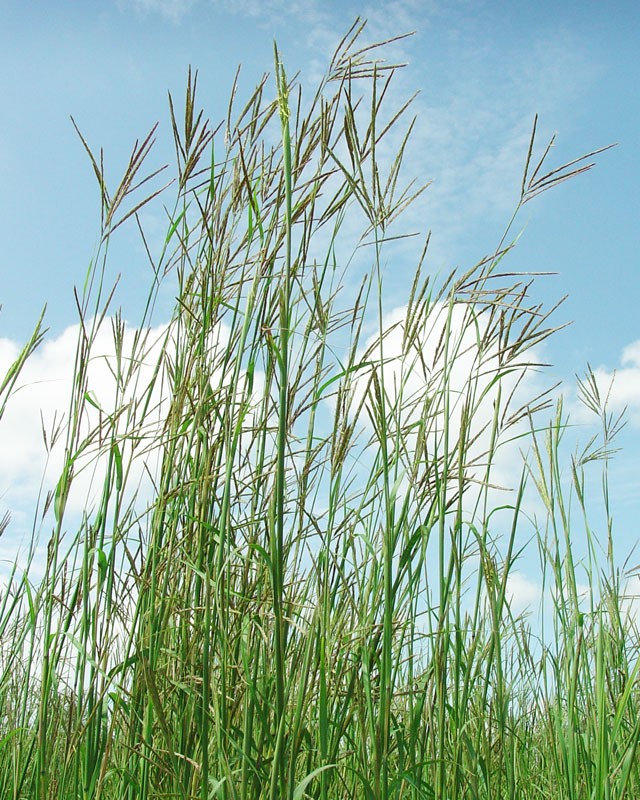

It somewhat resembles a wild turkey's foot. The inflorescence (cluster of flowers) is a raceme of two to six, most commonly three, narrow spike-like racemes alternately arranged along the top of the stem. The stem base turns blue or purple as it matures.īig bluestem blooms in the summer and seeds into the fall. Depending on soil and moisture conditions, it grows to a height of 1–3 m (3.3–9.8 ft). The main roots are 6–10 ft (1.8–3.0 m) deep, and the plants send out strong, tough rhizomes, so it forms very strong sod. It is tolerant of a wide range of soil conditions. Description īig bluestem is a perennial warm-season bunchgrass. Andropogon gerardii still makes appearances in various literature, including other USDA publications. Kew's International Plant Names Index and USDA Germplasm Resources Information Network reject the spelling gerard ii and provide reasoning for gerard i as being the correct spelling for the specific epithet of this taxon. It was named for French botanist Louis Gérard, who had first described the plant from specimens that had been cultivated in Provence, France. Taxonomy Īndropogon gerardi was formally named in 1792 by Fulgenzio Vitman. It is also known as tall bluestem, bluejoint, and turkeyfoot. ex Willd.) RobertyĪndropogon gerardi, commonly known as big bluestem, is a species of tall grass native to much of the Great Plains and grassland regions of central and eastern North America.

It has sometimes been called the “monarch of the prairie.” It is also used as nesting material for birds and mammals. The flowers can take the mature height of the plant up to close to 8 feet in moist soils but it generally stays shorter in dry soils.īig bluestem is native to Minnesota and is an important component of the tallgrass prairies. Some say they resemble turkey feet, which is another common name for big bluestem. The flowers are purplish, three-parted, fingerlike clusters up to 4 inches long. The flowering stems rise above the foliage in late summer.

No major insect pests or diseases affect Blackhawks. It will not tolerate consistently wet sites, however. Blackhawks can tolerate poor soils and dry sites. It requires a full-sun site (a minimum of six hours of direct sunlight per day) and is not fussy when it comes to soils. It is perfect for the back of the perennial border, whether as an individual plant or in a group of plants to create screening or add drama.īlackhawks is hardy in USDA Zones 3-9 so it works for all northern gardeners. This is a big plant, eventually maturing at a height of 5 feet and more with the flowers and seed heads. By autumn, the purple foliage is so deep it looks almost black. Throughout the summer, those purple to red or almost bronze hues make their way throughout the foliage. The long, strappy leaves emerge green in spring but quickly start to take on some purple hues, even in June. The foliage of ‘Blackhawks’ evolves throughout the growing season. This new cultivar, developed by plantsman Brent Horvath at Intrinsic Perennials in Chicago, is a much-improved version of the native big bluestem. While little bluestem is a great choice, northern gardeners should really consider using big bluestem as well. The Minnesota-bred cultivar Little Heaven ™is one of several little bluestem options. Much breeding work over the past decade or more on this plant has resulted in its smaller size and more refined appearance. Many northern gardeners have cultivars of little bluestem ( S chizachyrium scopar ium) in their gardens. ‘Blackhawks’ big bluestem also adds exceptional fall (and summer) colors to the perennial garden.

Ornamental grasses add height and texture to our gardens.


 0 kommentar(er)
0 kommentar(er)
